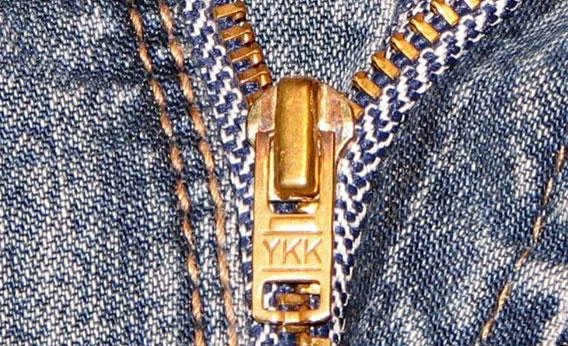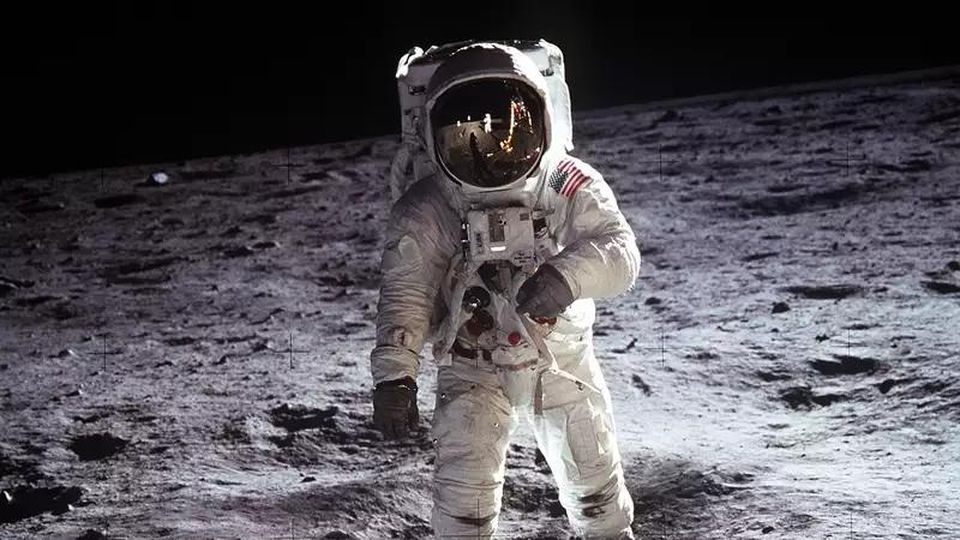Look at the zippers of your pants right now. There& #39;s a very good chance that the zipper says "YKK" - the company that produces almost 50% of the zippers used in the world every year.
A thread https://abs.twimg.com/emoji/v2/... draggable="false" alt="🧵" title="Thread" aria-label="Emoji: Thread">on how YKK dominated the Zippers market
https://abs.twimg.com/emoji/v2/... draggable="false" alt="🧵" title="Thread" aria-label="Emoji: Thread">on how YKK dominated the Zippers market  https://abs.twimg.com/emoji/v2/... draggable="false" alt="👇" title="Rückhand Zeigefinger nach unten" aria-label="Emoji: Rückhand Zeigefinger nach unten">
https://abs.twimg.com/emoji/v2/... draggable="false" alt="👇" title="Rückhand Zeigefinger nach unten" aria-label="Emoji: Rückhand Zeigefinger nach unten">
A thread
1/ It was 1851 when Elias Howe, the inventor of Sewing Machine, received a patent for "Automatic, Continuous Clothing Closure". He was too busy working on the Sewing Machines that he did not try to market & #39;Automatic, Continuous Clothing Closure& #39;.
2/ More than 40 years later, in 1893, Whitcomb Judson received two patents for an automatic closing device actuated by a slide mechanism or "Clasp Hooker". He set up a company with Lewis A Walker and called it & #39;Universal Fastener Company& #39;.
3/ By 1904, they had improved the design and patented a machine to make Clasp Hookers.
4/ 2 years later, a Swedish-American engineer Gideon Sundback joined them to continue the innovations but the Clasp Hookers failed. Their Clasp Hookers had awkward shapes and were sharp.
5/ In 1913, & #39;Universal Fasteners Company& #39; changed its name to & #39;Hookless Fasteners Company& #39;.
6/ Four years later, in 1917, Sundback received the patent for the "Separable Fastener" - which would become the modern zipper. That same year, Robert Ewig, a NY tailor, had started using Hookless Fasteners into money belts.
7/ The money belts with Hookless Fasteners were an instant success among WWI soldiers who did not have pockets on their uniforms. In 1918, the US Navy ordered fasteners for 10,000 flying suits.
8/ In 1923, BF Goodrich put the fasteners in their rubber boots so that one can quickly close their boots and with only one hand. BF Goodrich started calling it "zipper" after the "zip" sound it made.
9/ After the Great Depression, the boots were no longer popular but the name "zippers" had made its mark among the public.
10/ Zippers were mainly used on boots and tobacco pouches. It took 20 years to convince the fashion industry to use zippers on the garments.
11/ In the 1930s, a campaign began promoting children& #39;s clothing with zippers to make it possible for young children to dress in self-help clothing.
12/ By 1934, Hookless Fastener Company had sold 60 million pieces of zippers. And in 1937, Hookless Fastener Company changed its name to Talon, Inc. and operated under the same name for much of the 20th century.
13/ On the other side of the world, Tadao Yoshida was working at a Japanese company that imported ceramics from China. When the company went bankrupt in 1934, the owner gave him the remains of his business, including a small subsidiary that produced handmade zippers.
14/ Tadao became the founder of the company & #39;San-es Shokai& #39; in 1934. The company then became known as Yoshida Kogyo Kabushikikaisha in 1938.
15/ Unfortunately, his company and work were put on hold by WWII and the destruction it brought to the factory in Tokyo. And there were no major events in company history from 1934 to 1942.
16/ In 1942 the company was reorganized as a limited corporation. And the now-famous "YKK" trademark was registered in 1946.
17/ Post-war, YKK had gained a reputation for the quality and the reliability of its zippers. And on the other hand, Talon Inc. was selling 500 million zippers annually after WWII.
18/ In 1947, Levi& #39;s introduced the first-ever pair of jeans with zippers.
19/ Fast forward to 1959, YKK had opened its first overseas plant in New Zealand. And by the 1960s, YKK had gained 95% of the Japanese Zippers Market.
20/ When Gideon Sundback& #39;s patents expired in 1960, YKK expanded to America and set up its first US office in New York.
21/ 60s was the decade when jeans with zippers had started becoming a norm. 1966 was a crucial year for YKK. The company had introduced YZip - an extra durable high-quality zippers for jeans.
22/ YKK had also invented the machine that would automatically include the YZip into the stitching process of the jeans.
23/ Talon Inc. was flourishing through the 1960s. It is estimated that 7 out of every 10 zippers in the US were Talon Zippers.
24/ But Talon had started declining after getting acquired by Textron in 1968. In the 70s, Talon was left with only 35% of the market share in the US. Today, Talon only produces a small % of zippers.
25/ The Apollo 11 mission of 1969 was a huge blow to Talon Inc.
26/ The spacesuits worn by Neil Armstrong and Buzz Aldrin when they landed on the Moon were fitted with YKK Zippers.
27/ By the 1970s, more than 2 Billion zippers were being produced annually. By 1974, one-quarter of the zippers sold were produced by YKK. And by the 1980s, YKK had become the industry leader.
28/ Talon Inc. made no improvements in the quality of productivity, failed to innovate, prices were high, and let go of the chances to make its mark on luggage and other outdoor gears.
29/ YKK was the opposite: they were constantly improving the quality, brings prices down, and had started building their own machines to increase productivity and sales.
30/ As of the early 2000s, YKK has been producing over 7 Billion zippers every year.
31/ As of 2019, YKK is present in 73 different countries, has more than 100 wholly-owned subsidiaries, employes more than 40000 people, brings in about $10B in revenues annually, and owns 40% of the Global Zippers Market.
32/ Every year, YKK produces 3 million kilometers worth of zippers – enough to circle the globe over 80 times.
34/ "When the customer is buying $200 pants, they better have a good zipper. Because the customer will blame the maker of the whole garment even if the zipper was the part that failed. A zipper will never make a garment. But it can break a garment," says the designer Trina Turk.
Again, look at the zippers of your pants right now.
End of thread. Stay tuned for more threads every week. https://abs.twimg.com/emoji/v2/... draggable="false" alt="🔔" title="Glocke" aria-label="Emoji: Glocke">
https://abs.twimg.com/emoji/v2/... draggable="false" alt="🔔" title="Glocke" aria-label="Emoji: Glocke">
End of thread. Stay tuned for more threads every week.

 Read on Twitter
Read on Twitter on how YKK dominated the Zippers market https://abs.twimg.com/emoji/v2/... draggable="false" alt="👇" title="Rückhand Zeigefinger nach unten" aria-label="Emoji: Rückhand Zeigefinger nach unten">" title="Look at the zippers of your pants right now. There& #39;s a very good chance that the zipper says "YKK" - the company that produces almost 50% of the zippers used in the world every year.A thread https://abs.twimg.com/emoji/v2/... draggable="false" alt="🧵" title="Thread" aria-label="Emoji: Thread">on how YKK dominated the Zippers market https://abs.twimg.com/emoji/v2/... draggable="false" alt="👇" title="Rückhand Zeigefinger nach unten" aria-label="Emoji: Rückhand Zeigefinger nach unten">" class="img-responsive" style="max-width:100%;"/>
on how YKK dominated the Zippers market https://abs.twimg.com/emoji/v2/... draggable="false" alt="👇" title="Rückhand Zeigefinger nach unten" aria-label="Emoji: Rückhand Zeigefinger nach unten">" title="Look at the zippers of your pants right now. There& #39;s a very good chance that the zipper says "YKK" - the company that produces almost 50% of the zippers used in the world every year.A thread https://abs.twimg.com/emoji/v2/... draggable="false" alt="🧵" title="Thread" aria-label="Emoji: Thread">on how YKK dominated the Zippers market https://abs.twimg.com/emoji/v2/... draggable="false" alt="👇" title="Rückhand Zeigefinger nach unten" aria-label="Emoji: Rückhand Zeigefinger nach unten">" class="img-responsive" style="max-width:100%;"/>





